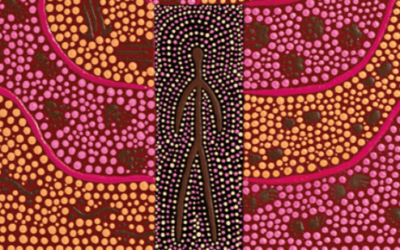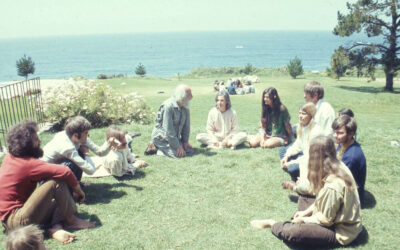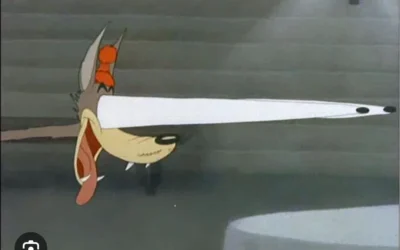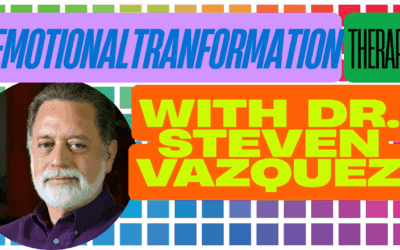What is Sensorimotor Art Therapy ?
Sensorimotor Art Therapy is an innovative therapeutic approach that combines principles of sensorimotor psychotherapy, art therapy, and somatic experiencing to address trauma and promote healing. This integrative method focuses on the interconnection between bodily sensations, emotional experiences, and artistic expression. By merging these elements, Sensorimotor Art Therapy offers a unique pathway for individuals to process and overcome traumatic experiences.
Unlike traditional talk therapies, Sensorimotor Art Therapy emphasizes the role of the body in storing and processing traumatic memories. It recognizes that trauma can manifest in physical sensations and movement patterns, which may not be easily accessible through verbal communication alone. By incorporating artistic expression, this approach provides an additional non-verbal avenue for exploring and resolving trauma-related issues.
The integration of sensorimotor techniques with art therapy allows clients to engage in a multisensory healing process. Through guided movement, body awareness exercises, and creative activities, individuals can access and process traumatic memories in a safe and controlled manner. This holistic approach addresses not only the cognitive aspects of trauma but also its somatic and emotional components.
How Does Sensorimotor Art Therapy Compare to Somatic Experiencing and Other Trauma-Focused Approaches?
Sensorimotor Art Therapy shares commonalities with other body-oriented approaches to trauma treatment, such as Somatic Experiencing and Sensorimotor Psychotherapy. However, it distinguishes itself through its unique integration of artistic expression into the therapeutic process.
Somatic Experiencing, developed by Peter Levine, focuses on resolving trauma by attending to bodily sensations and completing interrupted defensive responses. While Sensorimotor Art Therapy incorporates elements of this approach, it extends the process by introducing art-making as an additional pathway for processing and expressing somatic experiences.
Sensorimotor Psychotherapy, pioneered by Pat Ogden, emphasizes the role of the body in processing trauma and regulating arousal. Sensorimotor Art Therapy builds upon this foundation by incorporating artistic methods to enhance body awareness, facilitate emotional expression, and promote integration of traumatic experiences.
The addition of art therapy techniques in Sensorimotor Art Therapy provides a unique dimension to trauma treatment. It allows clients to externalize their internal experiences through visual representation, offering a tangible means of exploring and transforming traumatic memories. This creative process can be particularly beneficial for individuals who struggle with verbal expression or find traditional talk therapy approaches challenging.
What Are the Core Assumptions and Tenets of Sensorimotor Art Therapy?
Sensorimotor Art Therapy is built upon several key assumptions and principles that guide its approach to trauma treatment:
- Body-Mind Connection: The model recognizes the intricate relationship between physical sensations, emotions, and thoughts. It posits that trauma is stored not only in the mind but also in the body, and that addressing both aspects is crucial for comprehensive healing.
- Bottom-Up Processing: Sensorimotor Art Therapy emphasizes the importance of starting with bodily sensations and gradually moving towards cognitive processing. This bottom-up approach allows for the integration of somatic experiences that may be disconnected from conscious awareness.
- Window of Tolerance: The concept of the “window of tolerance” is central to this approach. Therapists work to help clients maintain an optimal level of arousal where they can process traumatic material without becoming overwhelmed or shut down.
- Artistic Expression as a Bridge: Art-making is viewed as a powerful tool for accessing and expressing non-verbal experiences related to trauma. It serves as a bridge between somatic sensations and cognitive understanding.
- Mindful Awareness: The practice of mindfulness is integral to Sensorimotor Art Therapy. Clients are encouraged to develop present-moment awareness of their bodily sensations, thoughts, and emotions.
- Empowerment and Resource Building: The approach aims to empower clients by helping them develop internal resources and coping strategies. Art-making is seen as a means of strengthening resilience and self-efficacy.
- Titration and Pendulation: These concepts, borrowed from Somatic Experiencing, involve carefully dosing exposure to traumatic material and alternating between accessing trauma-related sensations and returning to a sense of safety and regulation.
- Integration of Fragmented Experiences: Sensorimotor Art Therapy seeks to integrate disconnected aspects of traumatic experiences, promoting a more cohesive sense of self and narrative.
Who Started Sensorimotor Art Therapy and What Led to Its Development?
Sensorimotor Art Therapy as a distinct approach is still evolving, and it’s challenging to attribute its creation to a single individual. Instead, it has emerged as a synthesis of existing therapeutic modalities, primarily drawing from the work of pioneers in the fields of sensorimotor psychotherapy, somatic experiencing, and art therapy.
Pat Ogden’s development of Sensorimotor Psychotherapy in the 1970s laid significant groundwork for the integration of body-oriented approaches in trauma treatment. Ogden’s work was influenced by her background in dance and yoga, as well as her clinical observations of the role of the body in psychological healing.
Peter Levine’s contribution through Somatic Experiencing, which he began developing in the 1970s, also played a crucial role. Levine’s insights into how animals in the wild naturally process and recover from traumatic experiences informed his approach to human trauma resolution.
The integration of art therapy principles into this somatic framework can be attributed to the ongoing work of various art therapists who recognized the potential of combining body-based approaches with creative expression. While there isn’t a single founder of Sensorimotor Art Therapy, practitioners and researchers in both somatic and art therapy fields have contributed to its development.
The emergence of Sensorimotor Art Therapy can be seen as a response to the limitations of purely verbal or cognitive approaches to trauma treatment. As understanding of trauma’s impact on the body and nervous system grew, clinicians sought ways to address these somatic aspects more directly. Simultaneously, the expressive arts therapy movement was gaining recognition for its ability to access and process non-verbal experiences.
The convergence of these streams of thought and practice in the late 20th and early 21st centuries set the stage for the development of integrated approaches like Sensorimotor Art Therapy. This integration was further supported by advancements in neuroscience, which provided a scientific basis for understanding the interconnections between body, brain, and creative expression in trauma healing.
What Cultural and Economic Forces Influenced the Development of Sensorimotor Art Therapy?
The development of Sensorimotor Art Therapy has been shaped by various cultural and economic factors:
- Increased Awareness of Trauma: Growing public and professional awareness of the prevalence and impact of trauma, including PTSD, childhood abuse, and complex trauma, created a demand for more effective treatment approaches.
- Mind-Body Movement: The rising popularity of mind-body practices like yoga and mindfulness in Western culture paved the way for greater acceptance of body-oriented therapeutic approaches.
- Neuroscience Advancements: Rapid progress in neuroscience research provided scientific validation for the role of the body in processing trauma, lending credibility to somatic approaches.
- Holistic Health Trends: A cultural shift towards holistic and integrative health practices created an environment more receptive to therapies that address the whole person.
- Cost-Effectiveness Pressures: Economic factors in healthcare systems have driven interest in therapies that can provide efficient and effective trauma treatment, potentially reducing long-term healthcare costs.
- Diversity and Inclusion: Increasing emphasis on culturally sensitive practices in mental health has supported the development of non-verbal therapeutic approaches that may be more accessible to diverse populations.
- Technology and Globalization: The ease of sharing information globally has facilitated the cross-pollination of ideas between different therapeutic traditions and cultural healing practices.
- Arts in Healthcare Movement: Growing recognition of the value of arts in healthcare settings has provided institutional support for the integration of creative approaches in therapy.
These cultural and economic forces have contributed to creating an environment where innovative approaches like Sensorimotor Art Therapy could emerge and gain traction within the mental health field.
How Does Sensorimotor Art Therapy Conceptualize Trauma, the Unconscious, and Sense of Self?
Sensorimotor Art Therapy offers a unique perspective on trauma, the unconscious, and the sense of self, integrating concepts from somatic psychology, neuroscience, and art therapy:
Trauma Conceptualization:
In Sensorimotor Art Therapy, trauma is viewed as a multidimensional experience that affects the body, mind, and spirit. It is understood not just as a psychological phenomenon but as a physiological state stored in the body and nervous system. This approach recognizes that traumatic experiences can lead to dysregulation in the autonomic nervous system, resulting in symptoms such as hyperarousal, dissociation, and somatic disturbances.
The model emphasizes that trauma can disrupt the natural processing and integration of experiences, leaving individuals stuck in patterns of reactivity or shutdown. Traumatic memories are seen as fragmented and often stored implicitly in the body, rather than as coherent narratives. This understanding informs the therapy’s focus on bottom-up processing, starting with bodily sensations and gradually integrating cognitive and emotional aspects.
The Unconscious:
Sensorimotor Art Therapy conceptualizes the unconscious as not just a repository of repressed thoughts and feelings, but also as a realm that includes bodily wisdom and implicit memories. The unconscious is seen as accessible through somatic experiences, movement patterns, and artistic expression.
This approach posits that traumatic experiences that are too overwhelming to be processed consciously are stored in the unconscious parts of the brain and body. These unconscious elements can manifest as physical sensations, impulses, or fragmented images. Art-making is viewed as a powerful tool for accessing and bringing these unconscious elements into conscious awareness, allowing for their processing and integration.
Sense of Self and Identity:
The sense of self in Sensorimotor Art Therapy is understood as a dynamic, embodied experience rather than a fixed cognitive construct. Trauma is seen as potentially fragmenting the sense of self, leading to disconnection from one’s body, emotions, and core identity.
This approach emphasizes the importance of restoring a sense of agency and ownership over one’s body and experiences. Through mindful awareness of bodily sensations, movement, and artistic expression, clients are encouraged to reconnect with their authentic selves and develop a more integrated sense of identity.
The creative process in art-making is viewed as a means of exploring and reconstructing one’s sense of self. It allows for the externalization of internal experiences, providing a tangible representation of one’s identity that can be observed, reflected upon, and transformed.
Furthermore, Sensorimotor Art Therapy recognizes the role of the body in shaping identity and self-concept. It posits that our physical experiences, including posture, movement patterns, and physiological states, contribute significantly to our sense of self. By working with these bodily aspects through both somatic interventions and artistic expression, the therapy aims to facilitate a more cohesive and resilient self-identity.
The approach also acknowledges the impact of relational trauma on the development of self. It emphasizes the importance of the therapeutic relationship in providing a safe, attuned environment where new, healthier patterns of relating to oneself and others can be explored and internalized.
In summary, Sensorimotor Art Therapy offers a holistic conceptualization of trauma, the unconscious, and sense of self that integrates bodily experiences, artistic expression, and cognitive understanding. This multifaceted approach aims to address the complex nature of trauma and promote healing on multiple levels of human experience.
What Are the Interventions and Techniques Used in Sensorimotor Art Therapy?
Sensorimotor Art Therapy employs a diverse range of interventions and techniques that integrate somatic, artistic, and cognitive approaches. These interventions are designed to address trauma holistically, engaging the body, emotions, and mind in the healing process. Here’s an extensive list of key interventions and techniques:
- Body Scanning: This technique involves guiding clients to systematically focus their attention on different parts of their body, noticing sensations, tensions, and emotions. Body scanning helps increase body awareness and can reveal areas where traumatic experiences are held somatically.
- Mindful Movement: Clients are encouraged to engage in slow, deliberate movements while maintaining awareness of their bodily sensations and emotional responses. This can include simple gestures, stretches, or more complex movement sequences.
- Grounding Exercises: These techniques help clients connect with the present moment and their physical surroundings. They may involve focusing on the sensation of feet on the floor, feeling the support of a chair, or noticing objects in the room.
- Breath Work: Various breathing exercises are used to regulate the nervous system, manage arousal levels, and increase body awareness. This might include diaphragmatic breathing, counted breaths, or visualizing the breath moving through the body.
- Artistic Externalization: Clients are guided to create visual representations of their internal experiences, including bodily sensations, emotions, and trauma-related memories. This can involve drawing, painting, sculpture, or other artistic mediums.
- Sensory-Based Art Making: This involves creating art with a focus on the sensory experience of the materials. Clients might work with clay, textured papers, or other tactile materials to engage multiple senses and promote grounding.
- Body Mapping: Clients create visual representations of their bodies, highlighting areas of tension, pain, or other sensations associated with traumatic experiences. This technique helps externalize internal experiences and facilitates discussion about somatic symptoms.
- Movement-Based Drawing: This technique involves translating bodily sensations or impulses into artistic movements on paper or canvas. It can help clients express and process non-verbal aspects of their experience.
- Titration: Borrowed from Somatic Experiencing, this involves carefully dosing exposure to traumatic material to avoid overwhelming the client. In the context of art therapy, this might mean gradually approaching difficult themes or memories through artistic expression.
- Pendulation: Another concept from Somatic Experiencing, pendulation involves alternating between accessing trauma-related sensations and returning to a sense of safety and regulation. In art therapy, this might be facilitated through alternating between creating art related to traumatic experiences and art that evokes feelings of safety or pleasure.
- Resource Building through Art: Clients create artworks that represent internal or external resources, strengths, and sources of support. These creations can be used as tangible reminders of coping strategies and resilience.
- Mindful Art Observation: Clients are guided to observe their own artworks or those of others with mindful attention, noticing their bodily responses, thoughts, and emotions. This technique promotes self-reflection and can reveal insights about internal experiences.
- Bilateral Stimulation: Inspired by EMDR therapy, this technique might involve creating art using both hands alternatively or incorporating rhythmic movements while engaging in art-making to promote neural integration.
- Somatic Markers in Art: Clients are encouraged to notice and depict physical sensations associated with different emotional states or memories in their artwork. This helps in recognizing and understanding somatic responses to trauma.
- Safe Place Imagery: Clients create visual representations of real or imagined safe places, which can be used as resources for self-regulation and grounding during challenging moments in therapy.
- Body Posture Exploration: Through art and movement, clients explore how different body postures affect their emotional state and sense of safety. This can involve creating art from different physical positions or depicting figures in various postures.
- Trauma Narrative Integration: As clients become more regulated and resourced, they may be guided to create visual narratives of their traumatic experiences, integrating cognitive, emotional, and somatic elements.
- Sensory Boxes: Clients create boxes filled with objects that engage different senses and evoke positive or grounding experiences. These can be used as tools for self-soothing and regulation.
- Embodied Role-Play: Using art materials, clients may create representations of different parts of themselves or significant others, and then physically interact with these creations to explore relational dynamics and internal conflicts.
- Mindful Photography: Clients use photography to document their environment or experiences, focusing on mindful awareness of their surroundings and internal responses.
- Symbolic Gesture Drawing: Clients develop personal symbols or gestures that represent different emotional states or experiences, and incorporate these into their artwork as a form of non-verbal expression.
- Cooperative Art Making: In group settings, clients may engage in collaborative art projects that promote social engagement and challenge relational patterns stemming from trauma.
- Art-Based Body Dialogue: Clients create artworks representing different body parts or internal experiences and then engage in imaginal dialogue with these creations to gain insights and promote integration.
- Rhythmic Art Activities: Engaging in repetitive, rhythmic art-making processes (like weaving, knitting, or mandala drawing) to promote regulation and grounding.
- Sensory Journals: Clients maintain journals that combine written reflections with sensory elements (textures, colors, scents) to track their experiences and progress over time.
What Are the Goals and Stages of Treatment in Sensorimotor Art Therapy?
Sensorimotor Art Therapy follows a structured yet flexible approach to treatment, with goals and stages that address the multifaceted nature of trauma healing. The overall aims of this therapy include promoting nervous system regulation, processing traumatic memories, developing a cohesive sense of self, and enhancing resilience and adaptive functioning. The treatment process typically unfolds through several stages, each with specific goals and focus areas:
Stage 1: Safety and Stabilization
Goals:
- Establish a safe therapeutic relationship
- Develop body awareness and grounding skills
- Identify and strengthen internal and external resources
- Improve affect regulation and distress tolerance
Techniques:
- Safe place imagery and art creation
- Body scanning and somatic resource identification
- Grounding exercises combined with art-making
- Creation of visual representations of support systems and coping strategies
Stage 2: Processing Traumatic Memories
Goals:
- Access and process traumatic memories in a controlled, titrated manner
- Integrate fragmented sensory and emotional experiences
- Develop a coherent narrative of traumatic experiences
- Address somatic symptoms associated with trauma
Techniques:
- Body mapping of trauma-related sensations
- Artistic externalization of traumatic memories
- Movement-based drawing to express somatic experiences
- Pendulation between trauma processing and resource activation through art
Stage 3: Integration and Reconnection
Goals:
- Integrate new insights and experiences into a cohesive sense of self
- Develop new patterns of relating to self and others
- Enhance daily functioning and life engagement
- Consolidate gains and prepare for termination
Techniques:
- Creation of visual narratives that integrate past, present, and future
- Embodied role-play using artistic representations
- Collaborative art projects to practice new relational skills
- Development of ongoing creative practices for continued healing
It’s important to note that these stages are not strictly linear, and the therapeutic process often involves moving back and forth between stages as needed. The therapist continually assesses the client’s needs and adjusts the focus of treatment accordingly.
Is Sensorimotor Art Therapy Evidence-Based?
While Sensorimotor Art Therapy is a relatively new and integrative approach, its component parts—sensorimotor psychotherapy, art therapy, and somatic experiencing—have individual bodies of research supporting their efficacy in trauma treatment. However, as a combined modality, Sensorimotor Art Therapy is still in the early stages of establishing a robust evidence base.
Current evidence for Sensorimotor Art Therapy largely comes from case studies, clinical observations, and theoretical papers that draw on the established research in related fields. The approach is grounded in neuroscience principles regarding the impact of trauma on the brain and body, which lends it theoretical validity.
Some key points regarding the evidence base:
- Somatic Approaches: Research on sensorimotor psychotherapy and somatic experiencing has shown promising results in treating trauma-related disorders. For example, a study by Langmuir, Kirsh, and Classen (2012) found that sensorimotor psychotherapy was effective in reducing PTSD symptoms and improving body awareness.
- Art Therapy: Numerous studies have demonstrated the effectiveness of art therapy in treating trauma and PTSD. A meta-analysis by Schouten et al. (2015) found that art therapy had a significant positive effect on trauma symptoms.
- Integrative Approaches: While specific research on Sensorimotor Art Therapy is limited, studies on other integrative body-mind approaches to trauma treatment have shown positive outcomes. For instance, research on Dance/Movement Therapy, which shares some similarities with Sensorimotor Art Therapy, has demonstrated efficacy in trauma treatment (Koch et al., 2019).
- Neurobiological Rationale: The approach is consistent with current understanding of how trauma affects the brain and body. The emphasis on bottom-up processing and integration of sensory, emotional, and cognitive experiences aligns with neuroscience research on trauma and recovery (van der Kolk, 2014).
- Clinical Observations: Many practitioners report positive outcomes using Sensorimotor Art Therapy techniques, although these observations have not yet been systematically studied in large-scale trials.
While the individual components of Sensorimotor Art Therapy have empirical support, more research is needed to establish its efficacy as an integrated approach. Randomized controlled trials and other rigorous research designs would help to build a stronger evidence base for this promising therapeutic modality.
It’s worth noting that the lack of large-scale studies doesn’t necessarily indicate ineffectiveness. Many therapeutic approaches take time to accumulate a substantial body of research, especially integrative methods that draw from multiple established modalities.
In What Contexts is Sensorimotor Art Therapy Usually Practiced?
Sensorimotor Art Therapy, due to its integrative nature and focus on trauma healing, is practiced in various contexts and settings. Here are some of the primary contexts where this approach is typically employed:
- Private Practice: Many therapists trained in Sensorimotor Art Therapy offer this approach in their private practices, working with individual clients on a one-on-one basis.
- Mental Health Clinics: Some outpatient mental health clinics incorporate Sensorimotor Art Therapy as part of their trauma treatment programs.
- Trauma Recovery Centers: Specialized centers focusing on trauma recovery may offer Sensorimotor Art Therapy as one of their treatment modalities.
- Addiction Treatment Centers: Given the frequent co-occurrence of trauma and substance use disorders, some addiction treatment facilities incorporate this approach into their programs.
- Domestic Violence Shelters: Sensorimotor Art Therapy can be valuable in helping survivors of domestic violence process their experiences and develop coping skills.
- Veterans’ Health Services: Some VA hospitals and veterans’ health programs offer this therapy to address combat-related trauma and PTSD.
- Child and Adolescent Treatment Centers: Adapted versions of Sensorimotor Art Therapy are used in treating children and adolescents who have experienced trauma.
- Eating Disorder Treatment Facilities: Given its focus on body awareness and integration, this approach can be beneficial in treating eating disorders, which often have roots in trauma.
- Refugee Support Services: Organizations working with refugees may employ Sensorimotor Art Therapy to address the complex trauma often experienced by this population.
- Group Therapy Settings: While often used in individual therapy, adaptations of Sensorimotor Art Therapy can be applied in group settings as well.
- Holistic Health Centers: Some integrative or holistic health centers incorporate this approach as part of their mind-body wellness programs.
- Schools and Educational Settings: In some cases, elements of Sensorimotor Art Therapy are adapted for use in school counseling programs, particularly for students who have experienced trauma.
- Correctional Facilities: Some prisons and juvenile detention centers offer this therapy as part of their rehabilitation programs, recognizing the high rates of trauma among incarcerated populations.
- Disaster Response: In the aftermath of natural disasters or other large-scale traumatic events, Sensorimotor Art Therapy techniques may be incorporated into crisis response and community healing efforts.
The versatility of Sensorimotor Art Therapy allows it to be adapted to various settings and populations, making it a valuable tool in a wide range of mental health and wellness contexts.
What Psychotherapy Models Share Theoretical Overlaps with Sensorimotor Art Therapy?
Sensorimotor Art Therapy, as an integrative approach, shares theoretical overlaps with several other psychotherapy models. Understanding these connections can provide a broader context for the approach and highlight its place within the larger field of trauma-informed therapies. Here are some key models with significant theoretical overlaps:
- Sensorimotor Psychotherapy:
- Developed by Pat Ogden
- Shares the core focus on the body’s role in processing and healing from trauma
- Emphasizes the importance of physical sensations and movement in therapy
- Somatic Experiencing:
- Developed by Peter Levine
- Shares the concept of trauma as stored in the body and the importance of completing interrupted defensive responses
- Uses similar techniques like titration and pendulation
- Art Therapy:
- Contributes the use of artistic expression as a means of processing and communicating experiences
- Shares the belief in the healing power of creative processes
- Eye Movement Desensitization and Reprocessing (EMDR):
- Developed by Francine Shapiro
- Shares the focus on bilateral stimulation for processing traumatic memories
- Both approaches emphasize the importance of body awareness in trauma processing
- Mindfulness-Based Therapies:
- Includes approaches like Mindfulness-Based Stress Reduction (MBSR) and Mindfulness-Based Cognitive Therapy (MBCT)
- Shares the emphasis on present-moment awareness and non-judgmental observation of bodily sensations and thoughts
- Gestalt Therapy:
- Developed by Fritz Perls
- Shares the focus on present-moment awareness and the importance of bodily experiences
- Both approaches emphasize experiential techniques over purely verbal processing
- Body Psychotherapy:
- Encompasses various approaches that focus on the body-mind connection
- Shares the belief in the importance of addressing physical aspects of psychological issues
- Attachment-Based Therapies:
- Includes approaches like Emotionally Focused Therapy (EFT)
- Shares an understanding of how early relational experiences shape bodily and emotional patterns
- Internal Family Systems (IFS):
- Developed by Richard Schwartz
- Shares the concept of working with different “parts” of the self, which can be represented artistically in Sensorimotor Art Therapy
- Dialectical Behavior Therapy (DBT):
- Developed by Marsha Linehan
- Shares some focus on mindfulness and the development of distress tolerance skills
- Polyvagal Theory-Informed Therapies:
- Based on the work of Stephen Porges
- Shares an understanding of the role of the autonomic nervous system in trauma and the importance of creating safety in therapy
- Narrative Therapy:
- Developed by Michael White and David Epston
- Shares the idea of creating new narratives, which in Sensorimotor Art Therapy can be done through both verbal and artistic means
- Expressive Arts Therapy:
- Utilizes various art forms in therapy
- Shares the belief in the healing power of creative expression and the body-mind connection
- Psychodrama:
- Developed by Jacob L. Moreno
- Shares the use of embodiment and enactment to process experiences, which can be incorporated into Sensorimotor Art Therapy sessions
- Focusing-Oriented Psychotherapy:
- Developed by Eugene Gendlin
- Shares the emphasis on bodily felt sense and its importance in psychological healing
These overlaps demonstrate how Sensorimotor Art Therapy integrates various therapeutic traditions, creating a rich, multifaceted approach to trauma healing. It’s important to note that while there are similarities, Sensorimotor Art Therapy uniquely combines these elements, particularly in its integration of somatic and artistic methods.
What is Unique and Different About Sensorimotor Art Therapy?
Sensorimotor Art Therapy, while sharing commonalities with other therapeutic approaches, offers a unique combination of elements that sets it apart in the field of trauma treatment. Here are some key aspects that make this approach distinctive:
- Integration of Somatic and Artistic Processes:
- The primary uniqueness of Sensorimotor Art Therapy lies in its seamless integration of body-oriented (somatic) approaches with artistic expression.
- This combination allows for a multi-modal processing of traumatic experiences, engaging both non-verbal (somatic and artistic) and verbal pathways.
- Bottom-Up and Top-Down Processing:
- While many therapies focus primarily on top-down (cognitive) or bottom-up (somatic) processing, Sensorimotor Art Therapy actively engages both.
- The artistic component serves as a bridge between bodily sensations and cognitive understanding, facilitating a more comprehensive integration of traumatic experiences.
- Externalization of Internal Experiences:
- The use of art provides a unique way to externalize and concretize internal, often pre-verbal or non-verbal experiences related to trauma.
- This externalization through art allows for a level of distance and perspective that can make working with traumatic material more tolerable and less overwhelming.
- Multi-Sensory Engagement:
- By combining movement, touch (through art materials), visual processing, and verbal reflection, Sensorimotor Art Therapy engages multiple sensory modalities.
- This multi-sensory approach can be particularly effective in addressing the often fragmented nature of traumatic memories.
- Enhanced Accessibility:
- For clients who struggle with traditional talk therapy or find it difficult to verbalize their experiences, the combination of somatic awareness and artistic expression offers alternative pathways for communication and healing.
- Concrete Representation of Progress:
- The artworks created during therapy serve as tangible representations of the client’s healing journey, providing concrete markers of progress and change over time.
- Flexibility in Trauma Processing:
- The approach allows for flexible alternation between accessing traumatic material (through bodily sensations or artistic expression) and returning to safety (through grounding techniques or resource-oriented art-making).
- This flexibility can make trauma processing more manageable and reduce the risk of re-traumatization.
- Empowerment Through Creative Agency:
- The act of creating art can foster a sense of agency and control, which is often compromised in trauma survivors.
- This creative empowerment can extend beyond the therapy room, encouraging ongoing self-expression and self-regulation.
- Integration of Implicit and Explicit Memory:
- By working with both bodily sensations and visual representations, Sensorimotor Art Therapy facilitates the integration of implicit (body-based, non-verbal) and explicit (narrative, verbal) memory systems often disrupted by trauma.
- Cultural Sensitivity:
- The non-verbal aspects of this approach can make it more accessible and appropriate for clients from diverse cultural backgrounds, particularly those from cultures where direct verbal expression of emotions or traumatic experiences may be less common.
- Neurobiological Attunement:
- The combination of rhythmic, sensory-based art activities with somatic awareness can help regulate the nervous system in ways that align with current understanding of trauma’s neurobiological impacts.
- Holistic Self-Exploration:
- By engaging body, emotion, cognition, and creativity, Sensorimotor Art Therapy offers a holistic approach to self-exploration and healing that goes beyond symptom reduction to foster overall well-being and self-understanding.
These unique aspects of Sensorimotor Art Therapy offer promising avenues for trauma treatment, particularly for individuals who may not respond as well to traditional talk therapies or purely body-oriented approaches. The integration of somatic awareness and artistic expression provides a comprehensive framework for addressing the complex, multi-layered nature of traumatic experiences and their aftermath.
Bibliography and Further Reading
Elbrecht, C. (2018). Healing trauma with guided drawing: A sensorimotor art therapy approach to bilateral body mapping. North Atlantic Books.
Gantt, L., & Tinnin, L. W. (2009). Support for a neurobiological view of trauma with implications for art therapy. The Arts in Psychotherapy, 36(3), 148-153.
Hass-Cohen, N., & Carr, R. (Eds.). (2008). Art therapy and clinical neuroscience. Jessica Kingsley Publishers.
Hinz, L. D. (2009). Expressive therapies continuum: A framework for using art in therapy. Routledge.
Koch, S. C., Riege, R. F. F., Tisborn, K., Biondo, J., Martin, L., & Beelmann, A. (2019). Effects of dance movement therapy and dance on health-related psychological outcomes. A meta-analysis update. Frontiers in psychology, 10, 1806.
Levine, P. A. (2010). In an unspoken voice: How the body releases trauma and restores goodness. North Atlantic Books.
Malchiodi, C. A. (Ed.). (2014). Creative interventions with traumatized children. Guilford Publications.
Ogden, P., Minton, K., & Pain, C. (2006). Trauma and the body: A sensorimotor approach to psychotherapy. W. W. Norton & Company.
Rappaport, L. (2008). Focusing-oriented art therapy: Accessing the body’s wisdom and creative intelligence. Jessica Kingsley Publishers.
Schouten, K. A., de Niet, G. J., Knipscheer, J. W., Kleber, R. J., & Hutschemaekers, G. J. (2015). The effectiveness of


























0 Comments